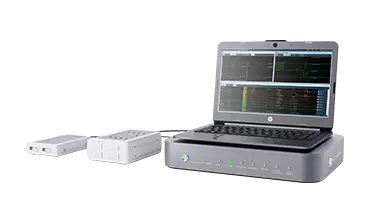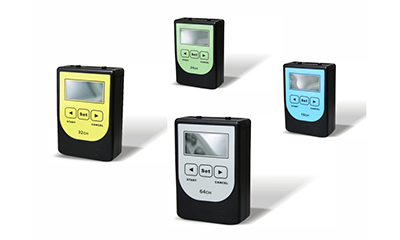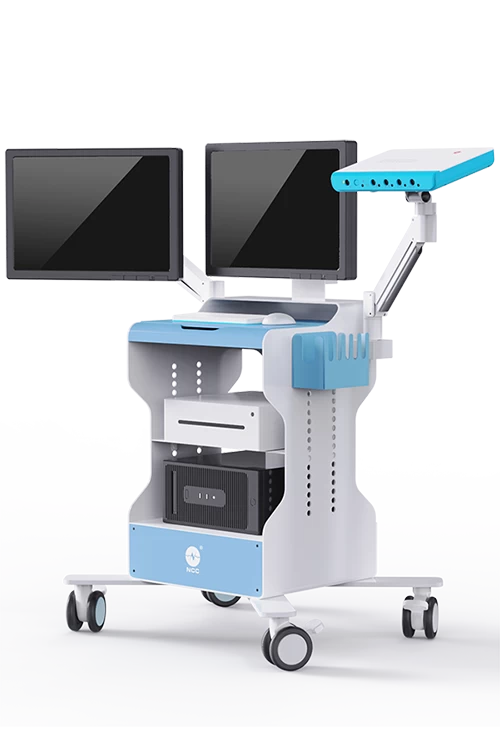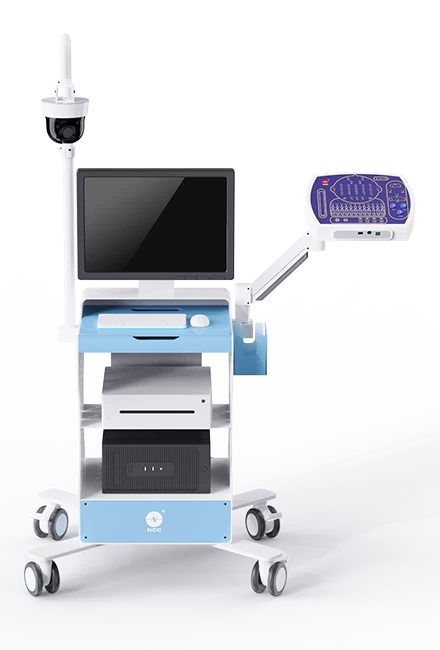The Benefits of IONM Systems in Minimally Invasive Spine Surgery
In recent years, minimally invasive spine surgery (MISS) has gained significant popularity due to its ability to offer faster recovery times, reduced scarring, and less postoperative pain compared to traditional open spine procedures. However, while these benefits make MISS an attractive option for patients, they also present challenges in terms of maintaining surgical precision and ensuring patient safety. This is where Intraoperative Neurophysiological Monitoring (IONM) systems come into play, offering real-time monitoring of the nervous system during surgery.
IONM systems have become an indispensable tool in spine surgery, particularly in minimally invasive procedures, by providing continuous feedback on the functional integrity of the spinal cord and nerves. This technology helps reduce the risk of neurological complications, improving the overall outcomes of the surgery. In this article, we’ll explore the key benefits of IONM systems in minimally invasive spine surgery and how companies like NCC are contributing to the advancement of neurophysiological monitoring technologies.
What is Intraoperative Neurophysiological Monitoring (IONM)?
Intraoperative Neurophysiological Monitoring (IONM) involves the use of specialized equipment to monitor the functional status of the nervous system during surgery. By measuring and recording electrical signals generated by the brain, spinal cord, and peripheral nerves, IONM allows surgeons to detect potential damage to neural structures in real-time. This enables immediate corrective action, significantly improving the chances of preserving nerve function and preventing postoperative neurological deficits.
IONM is particularly valuable in spine surgery, where delicate structures such as the spinal cord and nerves are at risk of injury due to the complexity of the procedures. In the context of minimally invasive spine surgery, where the surgical field is smaller and more confined, the real-time feedback provided by IONM is crucial for navigating the anatomy safely and effectively.
Key Benefits of IONM Systems in Minimally Invasive Spine Surgery
1. Enhanced Patient Safety and Reduced Risk of Neurological Injury
One of the primary benefits of IONM systems is the significant reduction in the risk of neurological injury during surgery. Since the spinal cord and nerves are sensitive and can easily be damaged, even small errors in technique can result in long-term consequences such as paralysis, loss of sensation, or motor dysfunction. IONM provides continuous monitoring of the nerves, enabling surgeons to identify potential problems before they cause irreversible damage.
During minimally invasive procedures, the limited view of the surgical site can make it difficult to assess the condition of neural structures. With IONM, surgeons can receive immediate alerts if any nerve activity is compromised, allowing them to adjust their technique or positioning to prevent injury. This real-time feedback ensures that the spinal cord and nerve pathways remain functional throughout the procedure, which is crucial for the patient’s postoperative recovery and quality of life.
2. Improved Surgical Precision
Minimally invasive spine surgery often requires surgeons to work through small incisions and navigate tightly constrained anatomical spaces. IONM systems enhance the precision of these procedures by providing valuable information about the position and condition of the spinal cord and nerves during surgery. Surgeons can adjust their approach in real-time based on the information provided by IONM, leading to more accurate and effective surgical interventions.
Moreover, IONM helps surgeons identify areas of nerve irritation or compression, enabling them to make precise decisions about the placement of screws, decompression, or tissue removal. The ability to fine-tune the surgical plan based on neurophysiological data enhances both the safety and success of minimally invasive spine surgeries.
3. Reduction in the Need for Open Surgery
IONM is particularly beneficial in minimally invasive spine surgery because it allows surgeons to maintain a high level of precision without the need for open procedures. In cases where complications are identified during surgery, IONM can help guide the surgeon in making adjustments without resorting to more invasive techniques. This is especially important for patients who are seeking to avoid the longer recovery times and increased risks associated with traditional open surgery.
By using IONM to ensure that nerve structures are properly protected, many patients can achieve optimal results with smaller incisions, less blood loss, and shorter hospital stays. In turn, this leads to a quicker recovery process and fewer post-surgical complications.
4. Real-Time Alerts and Immediate Intervention
IONM systems continuously monitor the electrical activity of nerves and the spinal cord during surgery, providing real-time alerts when abnormal signals or potential risks are detected. These alerts enable the surgical team to take immediate corrective action, whether it involves repositioning a surgical instrument, adjusting the surgical approach, or discontinuing a procedure if necessary.
By having this real-time feedback, the surgical team can act swiftly to mitigate potential risks and prevent neurological damage before it occurs. This proactive approach to nerve preservation contributes significantly to the overall success of spine surgery and helps minimize the occurrence of long-term complications.
5. Better Postoperative Outcomes
IONM’s ability to safeguard neural function during surgery directly contributes to improved postoperative outcomes. By preventing nerve damage during the procedure, IONM helps ensure that patients experience faster recovery times, reduced pain, and fewer complications following surgery. The early identification of issues during the procedure also reduces the likelihood of unexpected complications or the need for revision surgeries later on.
For patients undergoing minimally invasive spine surgery, this means less time spent in recovery, a lower risk of long-term disability, and a more favorable overall prognosis. The data provided by IONM also offers valuable information for post-surgical care, helping clinicians tailor rehabilitation plans to the patient’s specific needs.
NCC: Leading the Way in Neurophysiological Monitoring Technology
NCC, a leading provider of neurophysiological equipment and solutions, is at the forefront of advancing the use of IONM systems in spine surgery. With a focus on innovation and the continuous development of electrophysiological and rehabilitation technologies, NCC plays a pivotal role in improving the quality of care in neurosurgery, particularly in minimally invasive spine procedures.
Through years of research and development, NCC has developed state-of-the-art IONM systems that deliver real-time monitoring of neural pathways with exceptional accuracy. Their systems are designed to be user-friendly and adaptable, ensuring that surgeons can seamlessly integrate IONM into their workflows. Moreover, NCC offers a full range of neurophysiological solutions, including consumables and accessories, allowing healthcare providers to have a comprehensive, one-stop solution for all their neurophysiological monitoring needs.
By continually advancing the capabilities of IONM technology, NCC contributes to the evolution of spine surgery. Their commitment to patient safety, surgical precision, and cutting-edge technology makes them a valuable partner in the field of minimally invasive spine surgery.

Conclusion: Transforming Spine Surgery with IONM Systems
The integration of Intraoperative Neurophysiological Monitoring (IONM) into minimally invasive spine surgery has revolutionized the way surgeons approach complex spinal procedures. By providing real-time insights into nerve function and offering alerts for potential risks, IONM enhances patient safety, improves surgical outcomes, and reduces the need for open surgery.
As the demand for minimally invasive procedures continues to rise, IONM technology will play an increasingly central role in optimizing the safety and success of spine surgeries. Companies like NCC, with their innovative solutions and commitment to quality, are helping to shape the future of neurosurgery, providing healthcare professionals with the tools they need to deliver the best possible care to their patients.

 中文
中文 Arabic
Arabic Spanish
Spanish Hindi
Hindi French
French Indonesian
Indonesian Portuguese
Portuguese Persian
Persian Russian
Russian Korean
Korean German
German Vietnamese
Vietnamese Turkish
Turkish



